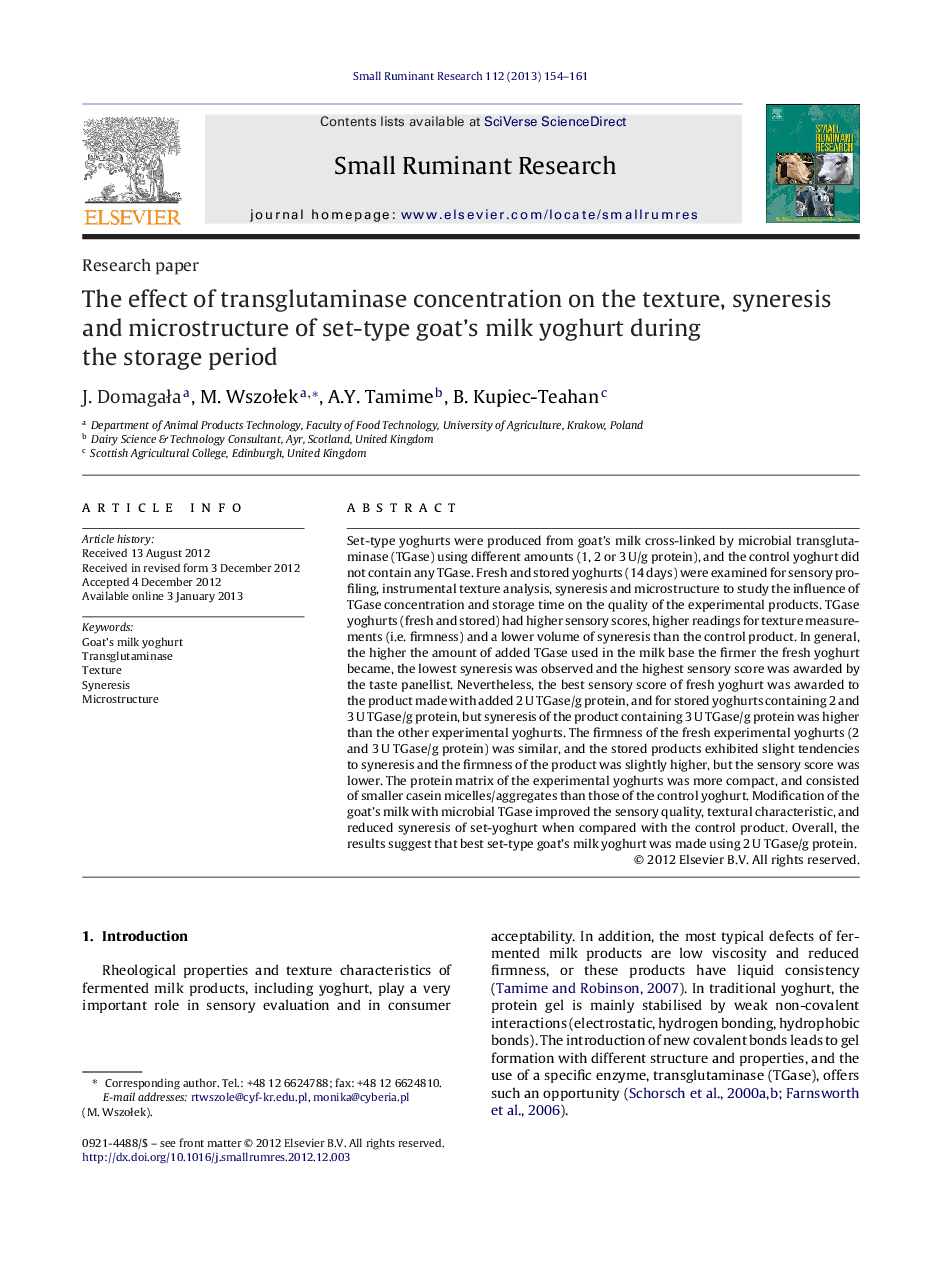| Article ID | Journal | Published Year | Pages | File Type |
|---|---|---|---|---|
| 5795766 | Small Ruminant Research | 2013 | 8 Pages |
Abstract
Set-type yoghurts were produced from goat's milk cross-linked by microbial transglutaminase (TGase) using different amounts (1, 2 or 3Â U/g protein), and the control yoghurt did not contain any TGase. Fresh and stored yoghurts (14 days) were examined for sensory profiling, instrumental texture analysis, syneresis and microstructure to study the influence of TGase concentration and storage time on the quality of the experimental products. TGase yoghurts (fresh and stored) had higher sensory scores, higher readings for texture measurements (i.e. firmness) and a lower volume of syneresis than the control product. In general, the higher the amount of added TGase used in the milk base the firmer the fresh yoghurt became, the lowest syneresis was observed and the highest sensory score was awarded by the taste panellist. Nevertheless, the best sensory score of fresh yoghurt was awarded to the product made with added 2Â U TGase/g protein, and for stored yoghurts containing 2 and 3Â U TGase/g protein, but syneresis of the product containing 3Â U TGase/g protein was higher than the other experimental yoghurts. The firmness of the fresh experimental yoghurts (2 and 3Â U TGase/g protein) was similar, and the stored products exhibited slight tendencies to syneresis and the firmness of the product was slightly higher, but the sensory score was lower. The protein matrix of the experimental yoghurts was more compact, and consisted of smaller casein micelles/aggregates than those of the control yoghurt. Modification of the goat's milk with microbial TGase improved the sensory quality, textural characteristic, and reduced syneresis of set-yoghurt when compared with the control product. Overall, the results suggest that best set-type goat's milk yoghurt was made using 2Â U TGase/g protein.
Related Topics
Life Sciences
Agricultural and Biological Sciences
Animal Science and Zoology
Authors
J. DomagaÅa, M. WszoÅek, A.Y. Tamime, B. Kupiec-Teahan,
